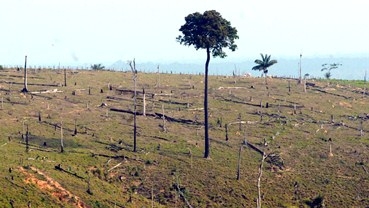When an unusual drought afflicted the Brazilian Amazon in 2005, river levels dropped in several tributaries of the Amazon Basin. At least 20 municipalities declared a state of emergency.
Seventy million hectares of trees were affected – and what’s worse, they were not yet recovered when a second, more severe dry spell struck the world’s largest rain forest in 2010.
Droughts, as well as rain storms in the Amazon, can increase in frequency and intensity over this century, according to the report Turn Down the Heat – Why a 4ºC Warmer World Must be Avoided.
The World Bank study warns that the planet is already 0.8°C warmer than in pre-industrial times, and that present greenhouse gas emission trends put it on a path toward 4°C warming.
Huge impact
The consequences of such a warming include extreme temperatures in several regions and a rise on the sea level, among others.
“The impact on the Amazon would be huge,” says author Erick Fernandes, World Bank Adviser for Climate Change and Natural Resources Management. “The 2005 and 2010 droughts prove that it doesn’t easily recover from shocks,” he adds.
Forest fires, for example, could double by 2050 with a warming of approximately 1.5°C to 2°C above preindustrial levels.
Changes would be expected to be even more severe in a 4°C warmer world – particularly in the states worst hit by deforestation, such as Pará, Rondônia, and Mato Grosso.
“If forest fires become more frequent with climate changes, the biodiversity of this region will be threatened in the long run,” says Fernandes.
Worldwide, around 20% to 30% of plant and animal species assessed so far are likely to be at increased risk of extinction, if the global average temperature rises by 2ºC–3°C.

